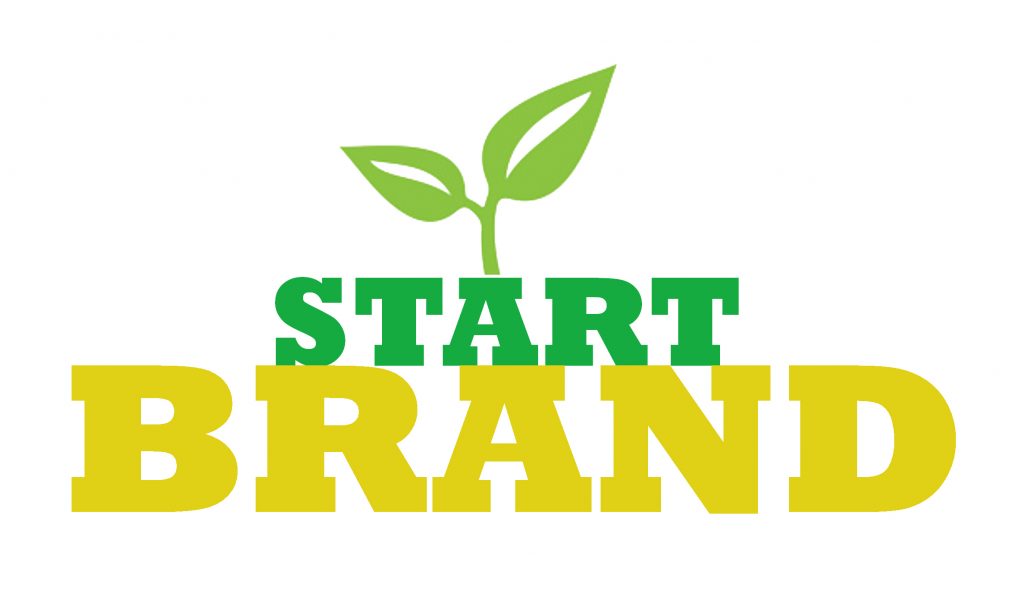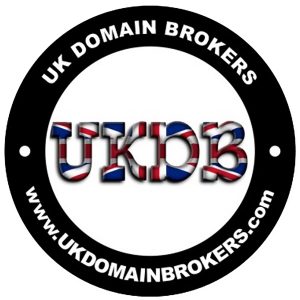Navigating the World of Domain Names: A Comprehensive Guide
Domain names serve as the digital addresses that enable users to access websites and online resources. These seemingly simple strings of characters play a crucial role in shaping the online presence of businesses, individuals, and organizations.
The Importance of Domain Names: Your Online Real Estate
A domain name is the foundation of your online presence, it’s your brand’s address on the internet. Just as a physical location determines how easily customers can find your shop, your domain name determines how easily people can find your business online.
Think of it this way: your domain name isn’t just a web address; it’s a digital identity that conveys trust, credibility, and professionalism. A well-chosen domain name can elevate your brand visibility, boost search engine rankings, and make it easier for customers to remember you.
The Sahara Desert Analogy
Imagine you’ve built a beautiful shop filled with amazing products, but you’ve built it in the middle of the Sahara Desert. It’s perfectly designed, stocked with premium goods, and has the best customer service.
The problem? No one knows it exists.
There are no roads, no signs, and no directions leading to your store. Unless people stumble upon it by pure chance (which is highly unlikely), your effort remains invisible.
This is exactly what happens when you create a website without a strong, relevant, and memorable domain name. You might have the best products or services in the world, but if your audience can’t find you online, your digital shop might as well be lost in the desert.
Choosing the Right Type of Domain
Not all domain names are created equal. While acronym domain names (like ABC.com) can work, they generally only succeed when they’ve been heavily marketed and become household names, think BBC, CNN, or BMW. For most businesses, however, this route is neither practical nor affordable.
The most valuable domains are short, one-word .coms, such as Booking.com, Amazon.com, or Zoom.com, these are premium digital assets, often commanding high prices because of their memorability and global recognition.
If your budget doesn’t stretch that far, there’s a smart alternative:
focus on exact-match keyword or phrase domain names that reflect what your audience is searching for. For example, if you own a bakery in Cardiff, a domain like CardiffBakery.co.uk or BestBakeryWales.uk can perform exceptionally well in local searches.
Exploring Domain Extensions
Beyond the traditional .com, there are many domain extensions that can help localise and define your brand’s identity. In the UK, popular choices include:
- .co.uk — trusted and recognised across the UK.
- .uk — a shorter, modern version for British businesses.
- .org — ideal for charities, non-profits, and community organisations.
- .wales — perfect for businesses that want to celebrate Welsh heritage.
- .cymru — the Welsh-language equivalent of “Wales” and an excellent choice for companies that want to strengthen their cultural connection to Cymru (Wales).
By aligning your domain extension with your target market, you enhance both your brand identity and your search visibility.
A domain name is far more than an online label, it’s the cornerstone of your brand’s digital success. It should be easy to remember, relevant to your business, and optimised for your audience. Without it, your online presence risks being hidden in the vast digital desert, unseen and undiscovered.
So, before building your website, choose your domain name wisely. It’s your online storefront, your brand identity, and your key to being found.
A domain name is a human-readable address that translates into the numerical IP address of a web server. This translation is facilitated by the Domain Name System (DNS), a hierarchical and decentralized system that connects domain names to their corresponding IP addresses. A typical domain name consists of two parts: the actual name (e.g., example) and the top-level domain (TLD) extension (e.g., .com, .org, .net).
Choosing the Right Domain Name:
- Relevance and Branding:
- Opt for a name that reflects the purpose or content of your website.
- Consider incorporating keywords related to your niche.
- Ensure it aligns with your brand identity for easy recognition.
- Memorability:
- Keep it concise and easy to remember.
- Avoid complex spellings or obscure terms that might confuse users.
- TLD Selection:
- Choose a TLD that fits your website’s purpose (.com for commercial, .org for organizations, .net for networks, etc.).
- Explore newer TLDs for niche-specific options (.tech, .blog, .guru).
- Avoid Trademark Issues:
- Conduct thorough research to avoid infringing on existing trademarks.
- Ensure your chosen domain doesn’t violate intellectual property rights.
Registering a Domain Name:
- Select a Registrar:
- Choose a reputable domain registrar to register your domain.
- Popular registrars include GoDaddy, Namecheap, and Google Domains.
- Check Availability:
- Verify the availability of your desired domain name.
- Be prepared with alternative options in case your first choice is taken.
- Registration Period:
- Domain registrations are typically annual; choose a registration period that suits your needs.
- Consider opting for auto-renewal to prevent unintentional expiration.
- Privacy Protection:
- Protect your personal information by opting for domain privacy protection.
- This service shields your contact details from being publicly visible in the WHOIS database.
Managing and Maintaining Domain Names:
- Renewal and Expiry:
- Keep track of your domain’s expiration date and renew it promptly.
- Set up auto-renewal to avoid unintentional lapses.
- DNS Management:
- Understand and utilize DNS settings for domain customization.
- Update DNS records when necessary for website changes or domain redirects.
- Security Measures:
- Enable two-factor authentication for your domain registrar account.
- Regularly update account passwords to enhance security.
Domain names are not just technical elements of the internet but integral components of an online identity. Choosing and managing domain names thoughtfully can significantly impact the success and accessibility of your online presence. By understanding the nuances of domain registration and adhering to best practices, individuals and businesses can establish a solid foundation for their digital ventures.
Demystifying Domain Valuation: A Guide to Assessing the Worth of Your Digital Assets
Domain names have evolved beyond mere online addresses; they have become valuable digital assets. Determining the value of a domain is a crucial step for individuals, businesses, and investors looking to buy, sell, or leverage these assets.
Factors Influencing Domain Valuation:
- Keyword Relevance:
- Assess the relevance of keywords within the domain to potential industries or markets.
- Domains with high-value keywords tend to attract more attention and higher valuations.
- Brandability and Memorability:
- Consider how easily the domain can be remembered and associated with a brand.
- Short, catchy, and brandable domains often command higher valuations.
- TLD (Top-Level Domain) Extension:
- Certain TLDs, such as .com, .net, and .org, are generally perceived as more valuable.
- Newer or niche-specific TLDs may have value in specific markets but are often less universally recognized.
- Traffic and Backlinks:
- Analyze the historical traffic and backlink profile of the domain.
- Domains with a consistent flow of organic traffic and quality backlinks may be more valuable.
- Domain Age:
- Older domains are often considered more trustworthy and can have a higher perceived value.
- Historical relevance and a clean ownership history contribute to a domain’s worth.
Domain Valuation Tools and Services:
- Automated Appraisal Tools:
- Utilize online tools such as Estibot, GoDaddy Domain Appraisal, or Sedo to get an initial estimate.
- Note that these tools provide automated valuations and may not capture all relevant factors.
- Marketplace Comparisons:
- Examine recent sales data on domain marketplaces like Sedo, Afternic, or Flippa.
- Compare similar domains and their sale prices to gauge the market value of your domain.
- Professional Appraisal Services:
- Consider hiring professional domain appraisers for a more in-depth and personalized assessment.
- These experts often provide detailed reports based on market trends and specific domain characteristics.
Realistic Pricing Strategies:
- Balancing Supply and Demand:
- Understand the current demand for similar domains in the market.
- Set a price that reflects both the unique attributes of your domain and market dynamics.
- Comparable Sales Analysis:
- Analyze comparable domain sales to establish a benchmark for pricing.
- Adjust your valuation based on the unique features of your domain.
- Flexibility in Negotiation:
- Be open to negotiation and consider factors such as the buyer’s budget, intended use, and urgency.
- Establish a fair and realistic price range to facilitate a smoother negotiation process.
Domain valuation is a nuanced process that requires a comprehensive understanding of various factors influencing a domain’s worth. By considering aspects such as keyword relevance, brand-ability, and TLD extension, combined with utilizing valuation tools and professional services, individuals and businesses can make informed decisions when buying or selling domain names. The key lies in striking a balance between objective data and market dynamics to arrive at a realistic and fair valuation.
Unmasking Cyberquatting: A Closer Look at UDRP as a Shield Against Domain Predators
Along with the vast opportunities come certain risks, one of which is cyberquatting. This deceptive practice involves the registration of domain names that closely resemble established trademarks or brand names with the intent of exploiting the reputation of the rightful owners. The Uniform Domain-Name Dispute-Resolution Policy (UDRP) stands as a crucial mechanism to combat cyberquatting, offering a legal framework for the resolution of domain disputes.
Understanding Cyberquatting:
- Definition:
- Cyberquatting, also known as domain squatting, involves the bad-faith registration of domain names that are identical or confusingly similar to existing trademarks or well-known brand names.
- Perpetrators often aim to profit from the association with established brands, either through resale or by diverting traffic for financial gain.
- Motivations:
- Financial Gain: Cyber squatters may demand a ransom for the release of the domain or profit from misleadingly diverting traffic to their site.
- Brand Tarnishing: Some cyber squatters may intentionally damage the reputation of a brand by using the domain for malicious activities.
The Role of UDRP:
- Overview:
- The Uniform Domain-Name Dispute-Resolution Policy (UDRP) is a process established by the Internet Corporation for Assigned Names and Numbers (ICANN) to resolve domain name disputes.
- UDRP provides a streamlined and cost-effective alternative to traditional litigation for resolving disputes related to the abusive registration of domain names.
- Elements of UDRP:
- Rights: The complainant must prove that they have rights to a trademark or service mark that is identical or confusingly similar to the disputed domain name.
- Legitimacy: The respondent (cyber squatter) must lack legitimate rights or interests in the domain name.
- Bad Faith: The domain must have been registered and used in bad faith, indicating an intent to profit or harm the complainant.
Initiating UDRP Proceedings:
- Filing a Complaint:
- Complainants can initiate a UDRP proceeding by filing a complaint with an approved dispute resolution provider.
- The complaint should clearly outline the elements required under the UDRP.
- Response from Respondent:
- The respondent has an opportunity to respond to the complaint, presenting evidence of legitimate rights or contesting bad faith registration.
UDRP Decision and Remedies:
- Decision Process:
- UDRP panels consist of one or three experts who review the evidence presented by both parties.
- The panel then issues a decision based on the UDRP criteria.
- Remedies:
- If the panel finds in favor of the complainant, remedies may include the transfer or cancellation of the disputed domain.
- UDRP decisions are binding, and domain registrars are obligated to implement them.
Protecting Against Cyberquatting:
- Proactive Measures:
- Regular monitoring of trademark registrations and online presence to identify potential instances of cybersquatting.
- Swift registration of relevant domain names to prevent cyber squatters from seizing them.
- Legal Counsel:
- Consult with legal professionals specializing in intellectual property to develop a robust strategy for protecting against cyberquatting.
- Act promptly if instances of cybersquatting are identified to mitigate potential harm.
Cyberquatting poses a significant threat to the online presence and reputation of businesses and individuals. The UDRP serves as a powerful tool in combating this deceptive practice, offering a streamlined and effective mechanism for resolving domain disputes. By understanding the dynamics of cybersquatting, staying vigilant, and leveraging the UDRP process when necessary, entities can safeguard their trademarks and maintain a secure and trustworthy online identity.
Mastering the Art of Selling Domain Names
Domain names have become valuable assets, and selling them can be a lucrative venture for those who understand the market dynamics. Whether you’re a seasoned domain investor or someone looking to capitalize on a premium domain you own, this guide will walk you through the essential steps to successfully sell domain names.
Selling domain names requires a combination of market understanding, effective marketing, and negotiation skills. By carefully assessing your domain’s value, optimizing your listing, and employing strategic marketing efforts, you can increase the likelihood of attracting potential buyers and securing a successful sale. Additionally, navigating the legal aspects with due diligence ensures a smooth and secure transaction, providing a positive experience for both the buyer and the seller in the domain marketplace.
There is no guarantee your domains will sell, so be mindful of your finances and renewal fees. For a domain to sell, it all depends on supply and demand. Savvy entrepreneurs get creative, as in the case of me, for exampl,e wanting www.renata.com which is a watch battery manufacturer, and settling for www.renataentrepreneur.com and then rebranding again to www.irenata.com Not everyone has a massive marketing budget, and a competent SEO specialist can index and rank a business without buying additional domain names. Yes, there are organizations with deep pockets buying up domain names for high figures, but in most cases, these domains have equity and are premium assets.
Assessing Your Domain’s Value:
- Domain Appraisal:
- Use reputable domain appraisal tools to estimate the market value of your domain.
- Consider factors such as keyword relevance, TLD, length, and brandability.
- Market Research:
- Analyze recent sales data of similar domains to gauge market trends.
- Identify potential buyers and understand their preferences.
Preparing Your Domain for Sale:
- Domain Listing Platforms:
- Choose reputable domain marketplaces like Sedo, Flippa, or Afternic to list your domain.
- Craft an engaging and informative listing that highlights the domain’s unique selling points.
- Domain Presentation:
- Create a professional-looking landing page for your domain with relevant information.
- Include details such as the domain’s history, potential use cases, and any additional features.
- Optimize for Search Engines:
- Use relevant keywords in your listing to enhance discoverability.
- Leverage SEO best practices to improve your domain’s visibility on search engines.
Marketing Your Domain:
- Social Media Outreach:
- Share your domain listing on social media platforms, industry forums, and relevant communities.
- Engage with potential buyers and answer inquiries promptly.
- Email Marketing:
- Build a targeted email list and reach out to potential buyers directly.
- Craft personalized messages highlighting the benefits of your domain.
- Networking:
- Attend industry events, webinars, and forums to connect with potential buyers.
- Establish relationships with professionals in your niche who might be interested.
Negotiating and Closing the Deal:
- Pricing Strategy:
- Be realistic about your domain’s value and set a competitive price.
- Consider the buyer’s budget and negotiate in good faith.
- Escrow Services:
- Use reputable escrow services to ensure a secure transaction.
- Only transfer the domain once payment is verified.
- Transfer Process:
- Familiarize yourself with the domain transfer process of your registrar.
- Provide clear instructions and support to the buyer during the transfer.
Legal Considerations:
- Document the Sale:
- Draft a clear and comprehensive sales agreement outlining terms and conditions.
- Clearly state the responsibilities of both parties in the agreement.
- Ownership Verification:
- Verify the buyer’s identity and ownership of funds before finalizing the sale.
- Protect yourself from fraudulent activities through due diligence.
Changing a Websites Domain Name:
Rather than changing the domain name on an existing website, which can lead to broken pages, missing links, and costly technical fixes, a simpler and more effective approach is to forward the domain to your current site. For example, you could forward www.irenata.com to www.renataentrepreneur.com. This method preserves your SEO rankings, keeps your website structure intact, and still allows you to benefit from additional branded or keyword-rich domain names that direct traffic straight to your main website without disruption.
To set up domain forwarding, simply log in to your domain registrar’s control panel (for example, IONOS, GoDaddy, or Namecheap), locate the domain forwarding or redirect settings, and enter the web address you want your visitors to be taken to. Once saved, all traffic from the forwarded domain will automatically be redirected to your main site, seamlessly and without the need for any complex website changes.
Conclusion:
Already established businesses will be reluctant to rebrand, and believe me it is a headache to do, as I have learned.
If you are going to buy domain names, be sure to buy all the matching TLD extensions to stop cybersquatting. Do your due diligence to make sure the words are not trademarked.
Do check out www.ukdomainbrokers.com for a list of domains that may not be available on other marketplaces.
Lastly, if your aim is simply to sell your domain name without developing a website, create a Banner Ad and share it on social media groups and pages. If it is within your budget, create a landing page on a pre-exisiting site, write some content, and perform SEO to get your domain noticed. Don’t approach busy CEOs unless you have started a business relationship and have an open dialogue. Having your domain in front of a targeted audience will give you the edge of being discovered and the ones that are interested in what you have to say will reach out to you if they want to acquire your domain name or conduct business with you.
Further Reading:











